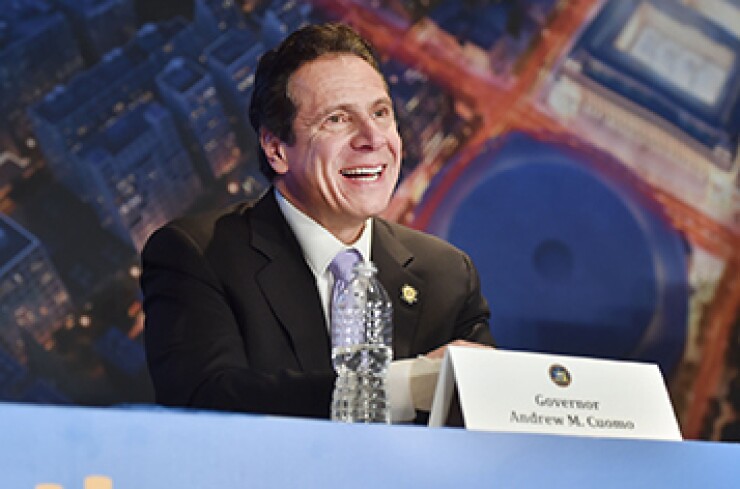
Facing pressure from Gov. Andrew Cuomo, officials from New York's Metropolitan Transportation Authority are targeting an opening of the long-delayed Second Avenue subway line by the end of the month.
"We're cautiously optimistic we're going to meet the date," MTA Chairman Thomas Prendergast said Monday afternoon. "That says it in a nutshell. It really does."
Cuomo has been leaning on the MTA, a state-run transit agency, to open the Second Avenue subway line by Dec. 31. Over the weekend, Cuomo toured the 72nd Street and 86th Street stations, two of four under the initial phase of the $4.5 billion megaproject.
"We still have a lot of work to do," the governor told reporters Sunday. "It's a complex project. We're going to work every day between now and Dec. 31, I can tell you that, to make sure we hit the deadline."
The rate of systems test completions more than doubled over the last few weeks and is on track to finish all required tests before the end of December, the MTA's independent engineer, Kent Haggas of McKissack Group Inc., told the authority's capital construction committee Monday. "That had been a concern of mine; the critical remaining work includes the completion of the required communications, fire alarm systems and the station service centers – token booths.
"The equipment testing at each station is essentially completed. The public areas of the stations are in final fitting-out and cleanup."
According to Anil Parikh, senior vice president for the MTA's capital construction unit, completing the public-address system testing by Dec. 24 is the latest "critical milestone" before the revenue service date – authority code for opening at least one station.
The MTA is one of the largest municipal issuers with roughly $37 billion in debt.
The project, about 100 years in the making, is intended to alleviate crowding on the north-south Lexington Avenue corridor along Manhattan's East Side. The first phase would add four stations: Lexington Avenue and 63rd Street, 72nd Street, 86th Street and 96th Street. When fully completed, the line will stretch 8.5 miles along the East Side, from 125th Street in Harlem to Hanover Square in lower Manhattan.
"People thought we should probably move the deadline," said Cuomo. "And I said, 'No, we're going to stick to the deadline and we're going to work like hell to make it,' and that's exactly what we're doing."
With Cuomo having painted himself and the MTA into a corner on a December timetable, one option would be a partial opening at 63rd Street, which would immediately loop in Q line riders – essentially a de-facto Q extension – and score public-relations points. An announced Dec. 23 or Dec. 24 opening would still give him some wiggle room.
On Monday, the finance committee forwarded its $15.8 billion budget and four-year financial plan to the full board, which will vote on it Wednesday. The budget is separate from its five-year, $29 billion capital plan.
The four-year plan projects ending cash balances of $260 million in 2016, $23 million in 2017, $76 million in 2018 and $32 million in 2019 with a projected cash deficit of $319 million in 2020.
Officials say changes and re-estimates show improving financial results over the plan period. They include lower debt service expenses, $294 million; bond-issuance timing and projected lower rates, $128 million; bond refunding savings, $116 million; assumed favorable borrowing rates, $26 million; and variable rate savings, $24 million.
The MTA expects to approve 4% biennial fare and toll increases next month. It has held public hearings throughout December. According to chief financial officer Robert Foran, the authority is changing the 2017 increase, which would take effect in mid-March, from a 4% revenue yield to a 4% price increase, saving customers about $26 million a year or $94 million over the plan period.
This plan retains from the July plan $566 million of debt service savings from the Hudson Yards lease securitization and lower interest rates, both realized and projected, during the plan period to support the capital program.





